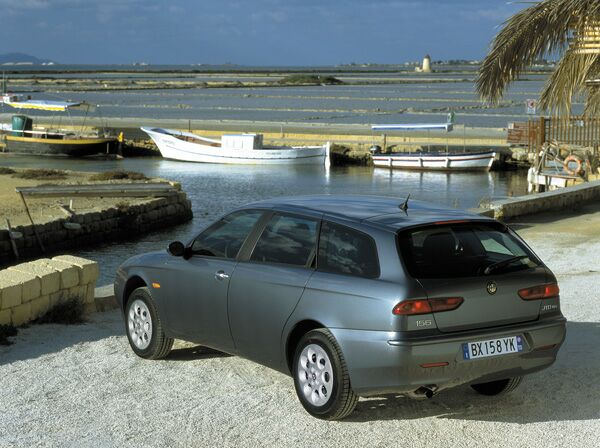| >>> the Multijet
System
The adoption of the Multijet
system makes the 1.9 JTD the first second generation Common Rail power
unit in the world. It is based on the same Unijet Common Rail principles,
i.e. high injection pressure and electronic injector control. But with
one difference: the number of injections increases from the current number
of two during each engine cycle. In this way, the same amount of diesel
is burnt inside the cylinder but in smaller parts to achieve smoother combustion.
The benefits include lower
running noise, an emission reduction and a 6-7 percent increase in performance,
accompanied by an engine output that increases car handling still further.
This result is extremely impressive, particularly in an engine that not
only represents a great technological leap forward compared to prechamber
diesel engines but is also streets ahead of first generation JTD engines.
The secret of the Multijet
engine lies in the control unit that governs the electric injector opening
and closure system (and also in the injectors themselves). The crucial
part of the engine is the electronic control unit itself, due to its ability
to deliver a series of very closely-spaced injections.
Fiat Auto's researchers developed
the part (together with the injectors) specially for this application.
It is designed to deliver the multiple injections that assure the designer
more accurate control of pressures and temperatures developed inside the
combustion chamber and also more efficient use of air taken into the cylinders.
This enables further goals to be achieved: quieter combustion, reduced
emissions and increased performance.
The Multijet system is underpinned
by long years of research. Fiat engineers began by resolving the problem
of limits imposed by the control units. Then they went on to map the benefits
they could achieve by plotting different multiple injection sequences (two
secondary injections very close to the main injection; one secondary injection
not too close to the main injection plus two closely-spaced secondary injections;
one secondary injection and then two main injections close together after
a certain period etc.) against different engine service conditions; in
the idling region; with low loads and low rpm; with high rpm and moderate
load; with low rpm and high load etc.
The study revealed the potential
of the system and showed that great benefits are achievable in all cases,
though these tend to focus on one field or another according to the type
of sequence chosen and the engine service area targeted. In some cases,
for example, the priority is to reduce start-up times and fume levels,
in other cases it is to increase torque and reduce noise while in others
it is to reduce emissions and ensure a quieter drive.
And now this research strand
has led to the creation of the first Multijet engine: another first for
the Fiat Group in the diesel engine field. All this has been possible because
they have been building up know-how in this field since 1986, the date
that marked the arrival of the Croma TDI, the first direct injection diesel
vehicle in the world.
At that time, this represented
a true engineering breakthrough that was later adopted by other manufacturers.
Direct diesel injection engines offered better performance and lower fuel
consumption but failed to resolve the problem of excessive engine noise
at low rpms and while speeding up or slowing down. So work began on a more
advanced direct injection system and a few years later this led to the
development of the Common Rail principle and the Unijet system.
The idea first came from
the Zurich University research laboratories where scientists were working
on an injection system that had never before been applied to a vehicle,
i.e. the Common Rail system. The idea is simple yet elegant: if you continue
to push diesel into a tank, the pressure inside will rise and the tank
itself will become a hydraulic accumulator (or rail), i.e. a reserve of
pressurised fuel ready for use.
Three years later, in 1990,
the Unijet system developed by Magneti Marelli, Fiat Research Centre and
Elasis on the Common Rail principle entered the pre-production stage. In
1994, when this stage was complete, Fiat Auto started to look for a partner
with superlative knowledge of diesel engine injection systems. The final
phase of the project, i.e. completion of development and industrial production,
was thus eventually entrusted to the Robert Bosch company.
Now the story has reached
1997 and the launch date of the Alfa 156 JTD with its revolutionary turbodiesel
engine. Compared to conventional diesel power units, the JTD guarantees
an average improvement in performance of 12% together with a 15% reduction
in fuel consumption. These results meant that cars fitted with the engine
were an immediate hit.
Now the second generation
of JTD engines, the Multijet and multivalve units enter production. And
the multipoint 1.9 JTD 16v is to be the forerunner of this new power unit
family. |






